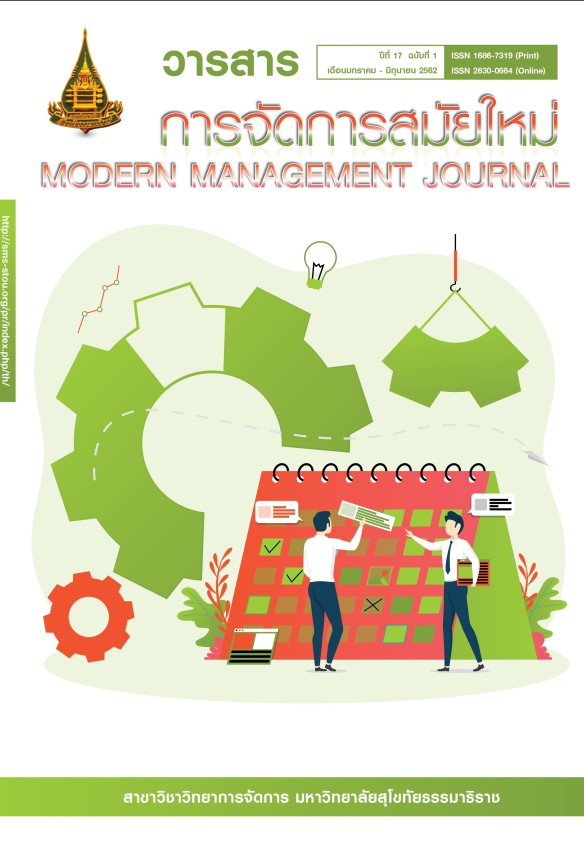A STUDY OF DEVELOPING SOFTWARE BUSINESS AND SOFTWARE-ENABLE SERVICE BY CREATING A BUSINESS NETWORK
Keywords:
Software Business, Software and Software-Enable Service, Business Network, Software Development Strategic PlanAbstract
This research article has four objectives: 1) to study supply chain and market structure of software and software-enable service industry; 2) to study impacts of the ASEAN Economic Community (AEC) on software and software-enable service industry; 3) to find guidelines for creating a business network in software and software-enable service industry; and 4) to propose strategic recommendations for developing software business and software-enable service through business networking. A qualitative research method has been employed through conducting documentary reviews, performing in-depth interviews, and undertaking focus group discussions.
It was found that the process of software and software-enable service supply chain begins from human capital. First, human who are the software producers create and design their software programs to meet the users’ needs and then they will develop, produce and sell or distribute it to users. Most Thai software and software-enable service enterprises sell their software products in local market. The coming of ASEAN Economic Community (AEC) causes low impacts to the software and software-enable service industry. The important factors for creating business network is to invite software and software-enable service enterprises to join software associations and connect software associations together from upstream to downstream activities of the supply chain. The researcher proposes strategic recommendations for developing software business and software-enable service through a short-term, medium-term and long-term action plan which consists of three strategic issues: strengthening the software association network, developing software enterprises and software standard, and developing facilities for operation.
References
Bowersox, D. J., Closs, D. J., & Cooper, M. B. (2012). Supply Chain Logistics Management. 4th ed. McGraw-Hill Higher Education, New York.
Christopher, M. (1998). Logistics and Supply Chain Management: Strategies for Reducing Costs and Improving Services. 2nd ed. London, UK: Financial Times/Pitman Publishing.
Cook, L. S., Heiser, D. R., & Sengupta, K. (2011). The Moderating Effect of Supply Chain Role on the Relationship between Supply Chain Practices and Performance: an Empirical Analysis. International Journal of Physical Distribution and Logistics Management. 42(2), 104-134.
Department of Industrial Promotion. (2014). Activities in Supply Chain. Retrieved August 14, 2018 from http://www.logistics.go.th/ index.php/news-information/bol-article/3157-4 [In Thai].
Digital Economy Promotion Agency. (2017, August 8). Thai Software Market declines and will decline continuously of 5% in 2017. Bangkokbiznews. Retrieved August 31, 2018 from http:// www.bangkokbiznews.com/news/detail/767912 [In Thai].
Electronic Transactions Development Agency. (2012). Digital Economy. Retrieved February 2, 2018 from https:// www.etda.or.th/digital-economy.html [In Thai].
Handfield, R. B., & Nichols, E. L. (1999). Introduction to Supply Chain Management. Printice-Hall, Upper Saddle River, New Jersey.
National Science and Technology Development Agency. (2018). What is Digital Economy?. Retrieved February 2, 2018 from https://www.nstda.or.th/th/nstda-r-and-d/595-digital-economy [In Thai].
Office of the National Economic and Social Board. (2013). The 2nd Thai Logistic System Development Strategic Plan (2013-2017). Retrieved November 24, 2016 from http://www.harvardasia.co.th/wp-content/uploads/2016/09/logistic2.pdf. [In Thai].
Office of Transport and Traffic Policy and Planning. (2014). The 4th Information and Communication Technology Master Plan (2015-2018). Retrieved December 8, 2017 from http://www.otp.go.th/uploads/tiny_uploads/PolicyPlan/8-ICT/PlanICT_2558-2561.pdf. [In Thai].
Porter, M. E. (1985). The Competitive Advantage: Creating and Sustaining Superior Performance. New York: Free Press.
Quinn, F. J. (1997). “What’s the Buzz?”. Logistic Management. 36(2), 43-47.
Rabob, C. (2010). Logistics and Supply Chain Management. Samutprakarn: Huachiew Chalermprakiet University. [In Thai].
Software Park Thailand. (2018). What is CMMI?. Retrieved July 26, 2018 from http://www.swpark.or.th/cmmiproject/index.php/general/73-what-cmmi/ [In Thai].
Stock, J. R., & Lambert, D. M. (2001). Strategic Logistics Management. 4th Edition. McGraw-Hill Higher Education.
Tan, K. C., Lyman, S. B., & Wisner, J. D. (2002). Supply Chain Management: a Strategic Perspective. International Journal of Operations and Production Management. 22(6), 614-631.



